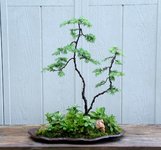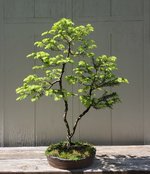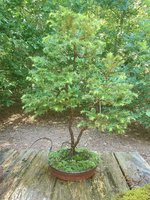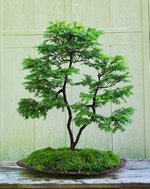VAFisher
Masterpiece
I'm gettin' down to the last of my trees that don't have a progression thread. This tree comes from the mountains of Western North Carolina and was collected by Mom and my Aunt back in 2017. They grew up around Highlands and were on a trip to visit places from their youth. I had mentioned to my Mom several times that I was interested in trying to develop a hemlock and she took it upon herself to get me one. I don't know exactly where they got it and I'm sure it was illegal, but who's gonna question two 70 year old women digging up a little hemlock and some wild flowers. Haha.
Anyway, the tree isn't very impressive but I will always cherish it for the story.
It seemed to recover the collection and the car ride from NC to VA in the trunk of my Mom's car just fine. I just let it do it's thing for the whole year of 2017 and forgot to take any pics. It seemed strong, so in 2018, I put the tree into a pond basket and set the initial structure.
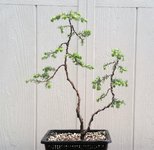
Anyway, the tree isn't very impressive but I will always cherish it for the story.
It seemed to recover the collection and the car ride from NC to VA in the trunk of my Mom's car just fine. I just let it do it's thing for the whole year of 2017 and forgot to take any pics. It seemed strong, so in 2018, I put the tree into a pond basket and set the initial structure.


